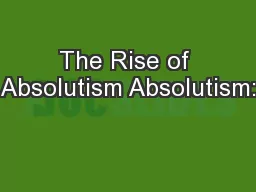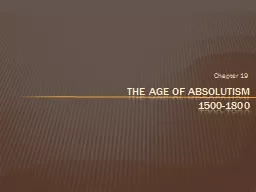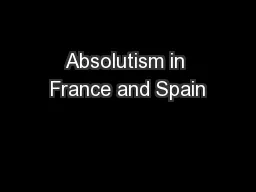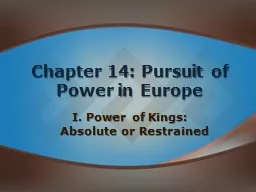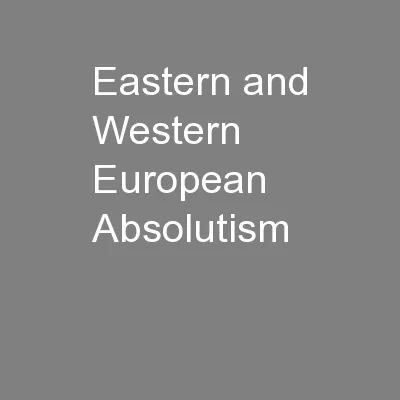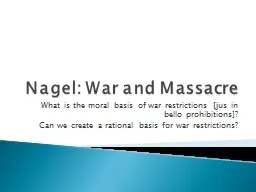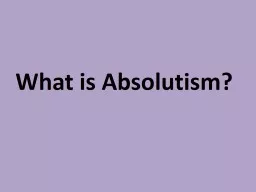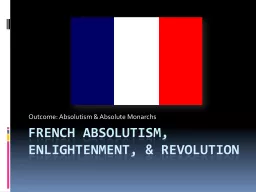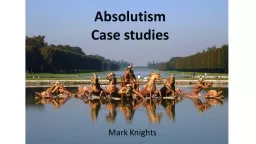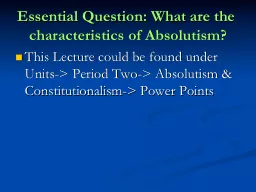PPT-The Rise of Absolutism Absolutism:
Author : briana-ranney | Published Date : 2018-09-23
A political system in which a single ruler has unrestricted power Spain King Charles V 15001558 Grandson of Ferdinand amp Isabella Also heir to the Hapsburg family
Presentation Embed Code
Download Presentation
Download Presentation The PPT/PDF document "The Rise of Absolutism Absolutism:" is the property of its rightful owner. Permission is granted to download and print the materials on this website for personal, non-commercial use only, and to display it on your personal computer provided you do not modify the materials and that you retain all copyright notices contained in the materials. By downloading content from our website, you accept the terms of this agreement.
The Rise of Absolutism Absolutism:: Transcript
Download Rules Of Document
"The Rise of Absolutism Absolutism:"The content belongs to its owner. You may download and print it for personal use, without modification, and keep all copyright notices. By downloading, you agree to these terms.
Related Documents

